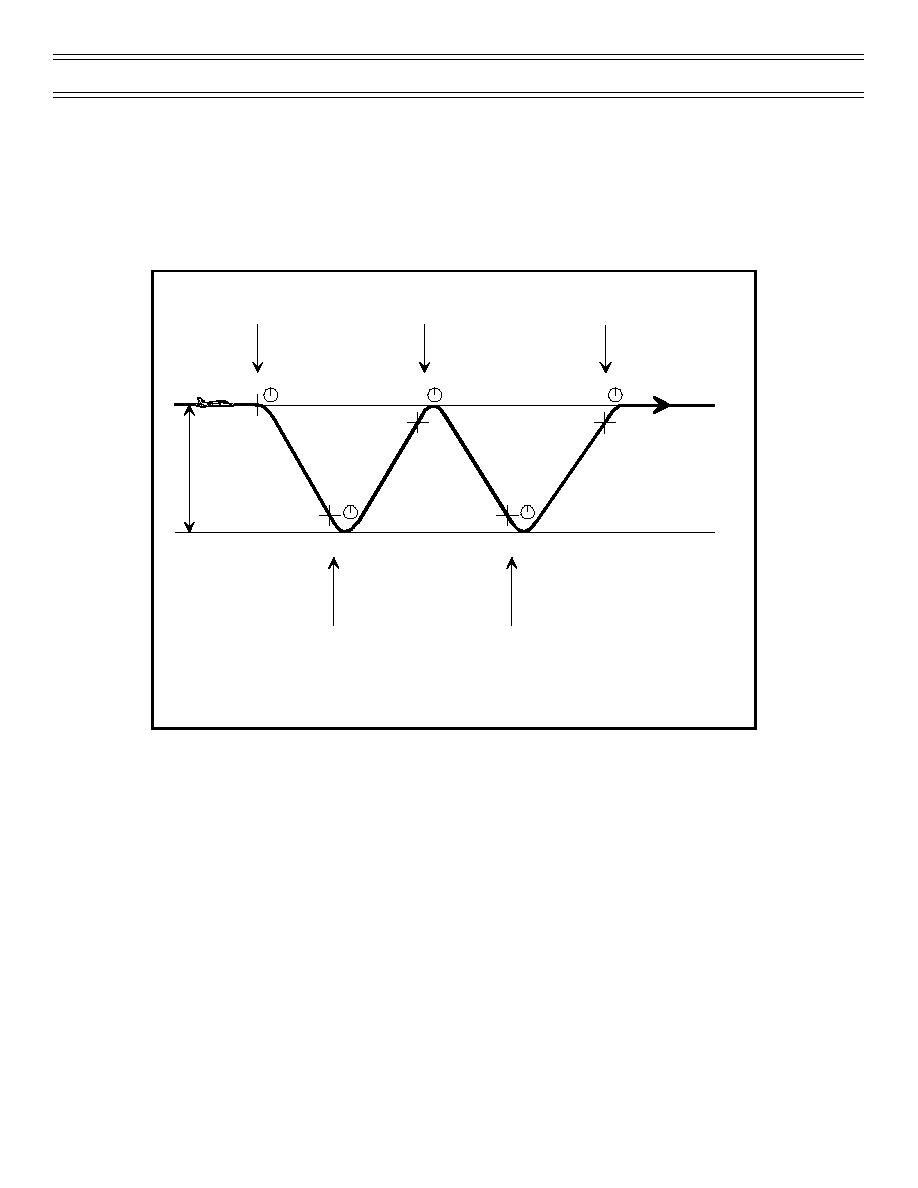
Basic Instrument Maneuvers
Instrument Flight
S-1 PATTERN
The S-1 pattern consists of a 1,000-fpm descent for 1,000 ft followed by a 1,000-fpm climb for 1,000 ft
(each maneuver lasting 1 minute in duration). This descent/climb sequence is performed a minimum of
two times (Figure 2). Fly the entire maneuver on a constant heading and at a constant airspeed of 200
KIAS.
Transition
Transition
Transition
1. Reduce RPM
1. Reduce RPM
1. Reduce RPM to
2. Lower nose
2. Lower nose
level flight setting
3. Maintain 200 KIAS
3. Maintain 200 KIAS
2. Lower nose to
level flight
12
12
12
Constant heading
200 KIAS
900 ft
900 ft
3 sec
1000 ft
12
12
100 ft
100 ft
100 ft or 3 sec prior to the 12
1. Throttle to climb
1. Throttle to climb
power
power
2. Raise nose
2. Raise nose
3. Maintain 200 KIAS
3. Maintain 200 KIAS
Transition
Transition
Figure 2: S-1 PATTERN
Initiate the maneuver at an airspeed of 200 KIAS by reducing power to approximately 700 pph and
lowering the nose approximately 1-2 degrees, 3 seconds before the second hand reaches the 12 o’clock
position on the clock. Descend at 1,000 fpm for 1,000 ft and then climb at 1,000 fpm for 1,000 ft. In order
to transition from descent to climb and back to descent at the proper altitudes, start your transition 100 ft
or 3 seconds (whichever occurs first) prior to the end of a climb or descent.
To maintain the climb/descent timed rate and airspeed, you will have to vary the pitch and power setting.
Avoid making large power and pitch corrections by cross checking the VSI and keeping the vertical speed
within +/- 300 fpm of your target rate. You use power to control the rate of climb/descent and pitch to
control airspeed. When you reach the lead point for a climb or descent, set the throttle to the appropriate
power setting and begin to rotate the nose smoothly to the new pitch angle. During climbs and descents,
check the clock against the altimeter to ensure that your altitude has changed by 250 ft every 15 seconds.
During climbs the altimeter pointer and second hand should mirror each other.
Page 26
(12-00) Original



 Previous Page
Previous Page
